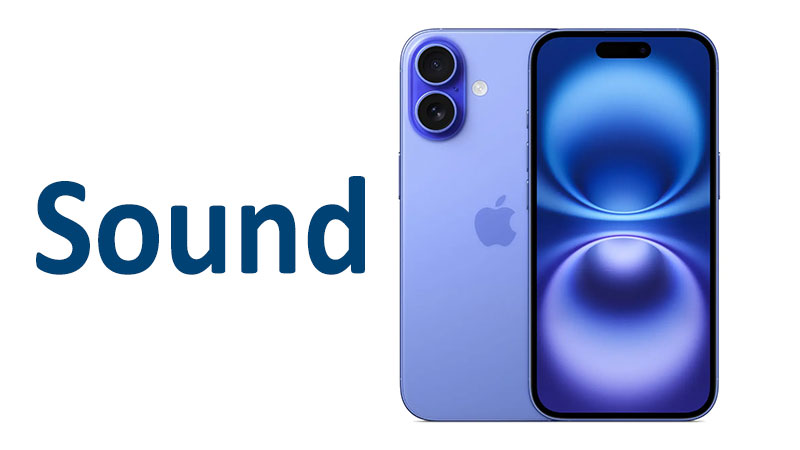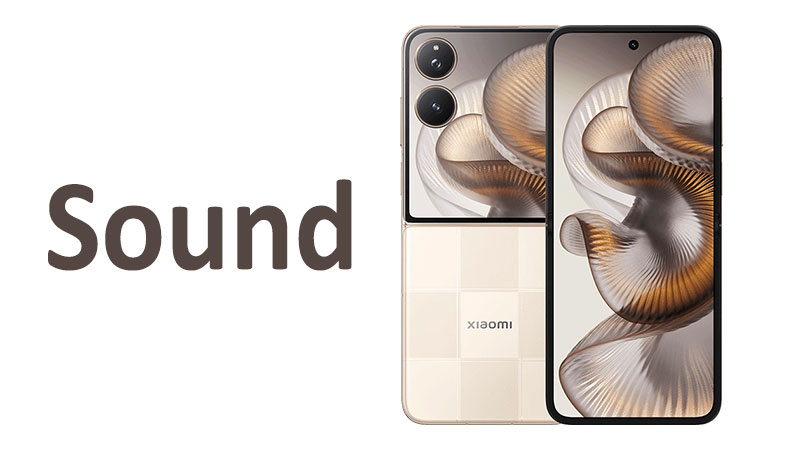The Apple iPhone 16 continues Apple’s legacy of delivering a premium smartphone experience, and a crucial part of this is its audio performance. For many users, a phone is more than just a communication device; it’s a portable media hub for music, movies, and podcasts. Understanding the iPhone 16 sound system, from its built-in stereo speakers to its advanced audio features, is essential for anyone considering an upgrade. This article dives deep into the iPhone 16’s audio quality, comparing it to its predecessor and competitors, and exploring what it means for your daily usage.
The iPhone 16’s audio capabilities are not just about loudness. They are about delivering a rich, immersive, and high-fidelity experience. The phone’s sound system is designed to provide clarity and depth, whether you’re listening to music, watching a video, or making a hands-free call. Apple has integrated several technologies to achieve this, including support for Dolby Atmos and Spatial Audio, which work in tandem to create a more dynamic and engaging listening experience.
Detailed Review of iPhone 16 Audio Features
Stereo Speakers and Audio Performance
The iPhone 16 is equipped with stereo speakers, a setup that has become a standard on modern smartphones. This configuration uses two separate speakers: one at the bottom and the earpiece at the top, to produce a wider soundstage. This is a significant improvement over a single mono speaker, as it allows for a more immersive experience when watching videos or playing games in landscape mode.
Loudspeaker: Yes, with stereo speakers
- Comparison with iPhone 15: The iPhone 16 speakers offer a noticeable improvement over the iPhone 15, with many users reporting a fuller, louder, and more detailed sound profile. This is particularly evident in the bass, which feels richer and more impactful on the new model. The sound is less tinny, even at lower volumes. Some reports, however, suggest that the lowest volume setting on the iPhone 16 might be slightly too loud for some users, a minor trade-off for the overall boost in power.
- Pros: The stereo setup creates a more immersive audio experience. The sound is loud and clear, with a good balance of highs, mids, and a surprising amount of bass for a phone. This makes it an excellent choice for casual media consumption without headphones.
- Cons: The sound quality can be perceived as slightly “tinny” at very low volumes. Some users have also reported a crackling or buzzing sound from the top speaker at higher volumes on some models, though this may be a software issue that can be fixed with updates.
- For the Buyer: The loudspeaker performance on the iPhone 16 is a highlight. If you frequently listen to music or watch videos without headphones, you will appreciate the improved clarity and volume. It’s a key selling point for those who use their phone as a portable entertainment device.
Lossless Audio and Connectivity
The iPhone 16 supports a wide range of audio formats, including AAC, MP3, Apple Lossless, and FLAC. This is crucial for audiophiles who want to experience high-fidelity music. When paired with high-quality headphones, the iPhone 16 can deliver exceptional sound.
3.5mm jack: No
- Comparison with Competitors: Most premium smartphones, including those from Google and Samsung, have moved away from the traditional 3.5mm headphone jack. This is now an industry-wide trend. The iPhone 16 follows suit, relying on a USB-C port for wired audio.
- Pros: The absence of a headphone jack allows for a more streamlined design and better water resistance. The USB-C port is a universal standard, making it compatible with a wide range of devices and accessories.
- Cons: Users with legacy wired headphones will need to purchase a USB-C to 3.5mm headphone jack adapter, which is often sold separately. This can be inconvenient and adds to the overall cost.
- For the Buyer: If you are a fan of wired headphones, you will need to invest in a USB-C compatible pair or a dongle. The phone’s Bluetooth 5.3 connectivity, with support for A2DP and LE codecs, provides a strong wireless alternative. You can use a variety of wireless headphones, including Apple’s own AirPods, which offer seamless integration and features like Spatial Audio.
Advanced Audio Technologies
The iPhone 16 is not just about hardware; it’s also about software. The phone leverages Apple’s advanced audio technologies to provide a more immersive experience.
- Dolby Atmos: This technology creates a three-dimensional soundscape, making you feel like you are in the middle of the action when watching movies or listening to supported music.
- Spatial Audio: When paired with supported AirPods or Beats headphones, this feature tracks your head movements and adjusts the sound to create a cinematic, theater-like experience. The sound stays anchored to your device, even as you move your head.
- Audio Mix: A new feature introduced with the iPhone 16, Audio Mix uses machine learning and artificial intelligence to give users more control over audio in their video recordings. This feature can isolate voices, reduce background noise, and even make audio sound as if it was recorded in a professional studio.
Conclusion
The Apple iPhone 16 sound system represents a significant step forward in mobile audio. The stereo speakers are a clear highlight, offering a richer, louder, and more immersive sound than its predecessor. While the continued absence of a 3.5mm headphone jack may be a point of contention for some, the move to a universal USB-C port is a practical one that aligns with industry standards. The inclusion of Dolby Atmos, Spatial Audio, and the new Audio Mix feature for video recording demonstrates Apple’s commitment to providing a top-tier audio experience.
For the average user, the iPhone 16’s audio quality is excellent for watching videos and listening to music casually. For audiophiles, the combination of high-fidelity audio format support and the option to use USB-C or Bluetooth headphones makes it a very capable device. The improvements in sound quality and the innovative software features make the iPhone 16 a compelling choice for anyone seeking a premium audio experience in their next smartphone.
FAQ
No, the iPhone 16 does not have a 3.5mm headphone jack. It relies on the USB-C port for wired audio connections.
Yes, reviews and user feedback indicate that the iPhone 16’s stereo speakers are an upgrade over the iPhone 15, offering better bass and a more balanced sound profile.
Audio Mix is a new software feature that uses AI to improve the audio in your video recordings. It can reduce background noise and make voices clearer.
Yes, you can use wired headphones with a USB-C connector or by using a USB-C to 3.5mm headphone jack adapter to connect your traditional headphones.
Yes, the iPhone 16 supports Spatial Audio for a more immersive listening experience, especially when using compatible AirPods.



